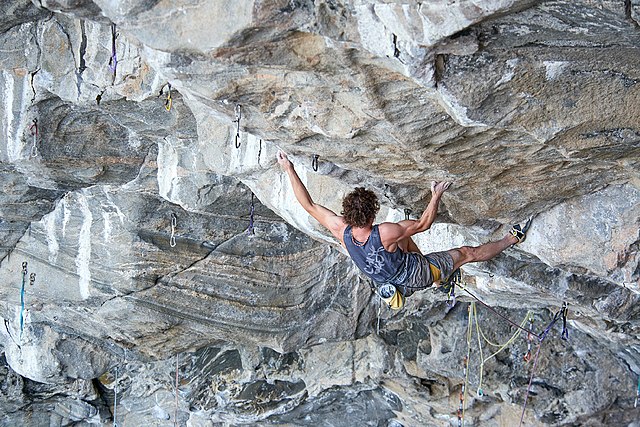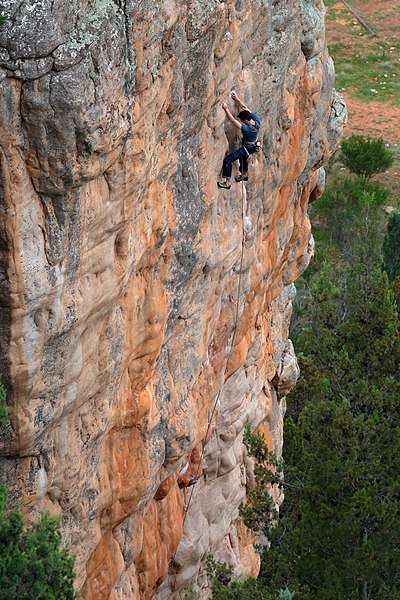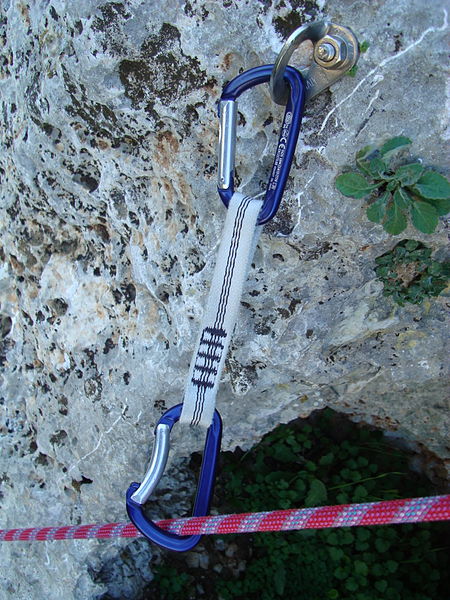Many climbing routes have a grade that reflects the technical difficulty—and in some cases the risks and commitment level—of the route. The first ascensionist can suggest a grade, but it will be amended to reflect the consensus view of subsequent ascents. While many countries with a strong tradition of climbing developed grading systems, a small number of grading systems have become internationally dominant for each type of climbing, which has contributed to the standardization of grades worldwide. Over the years, grades have consistently risen in all forms of climbing, helped by improvements in climbing technique and equipment.
The six levels (Grade I–VI) of the "Welzenbach scale", from 1926
Adam Ondra on the sport climbing route Silence, the hardest free climbing route in the world and the first-ever at 9c (French), 5.15d (American YDS), and XII+ (UIAA).
The crag of Clogwyn Du'r Arddu in Wales with Indian Face (centre), which was the first-ever E9-graded route on the British system at E9 6c (British) or 5.13a X (American)
Climber on Punks in the Gym, Mount Arapiles, grade 32 (Ewbank) and the world's first-ever 8b+ (French), 5.14a (American) route.
A climbing route is a path by which a climber reaches the top of a mountain, or rock/ice-covered obstacle. The details of a climbing route are recorded in a climbing guidebook and/or in an online climbing route database, and will include elements such as the type of climbing route, the difficulty grade of the route–and beta on its crux(es)–and any risk or commitment grade, the length and number of pitches of the route, and the climbing equipment needed to complete the route.
North face of the Eiger: The original 1938 Heckmair Route (blue-line #2), contrasts with the 1966 Harlin Direttissima (pink-line #3), and the 1969 Japanese Direttissima (pink-line #6). Not shown is the 2006 Russian Direttissima which is an almost straight vertical line between the Harlin and Japanese routes.
In-situ sport climbing protection showing a rope clipped into a quickdraw, that is clipped into a permanently fixed climbing bolt.






